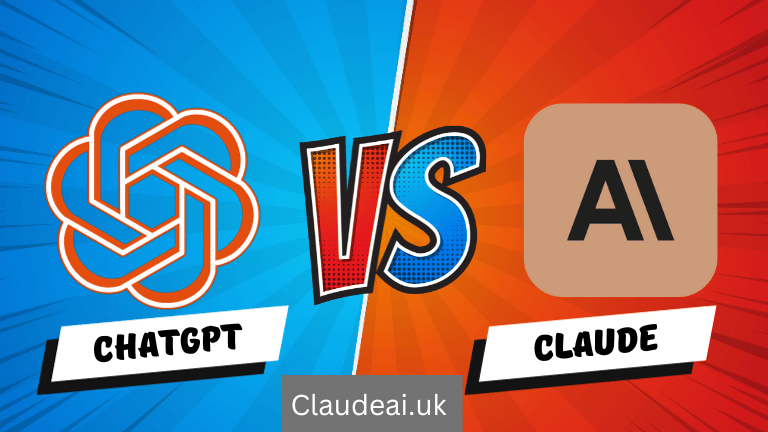ChatGPT vs Claude: Best FAR Analysis by Public GenAI Solutions. Financial analysis and reporting (FAR) is a crucial function for businesses, investors, and other stakeholders to understand the financial health and performance of a company. With advanced AI systems like ChatGPT and Claude now available, there is interest in leveraging these tools to assist with FAR. This article compares the capabilities of ChatGPT versus Claude for financial analysis and reporting tasks.
Introduction
Financial analysis involves assessing and interpreting financial statements such as balance sheets, income statements, and cash flow statements to gauge a company’s financial strength, efficiency, and growth prospects. Reporting disseminates the key findings from this analysis to relevant stakeholders through financial models, ratios, variance analysis, written reports, and data visualizations.
Advanced AI tools show promise for automating elements of financial analysis and reporting. Two of the leading contenders in this space are ChatGPT, developed by Anthropic, and Claude, built by Anthropic as well. This article provides an in-depth feature comparison between ChatGPT and Claude AI specifically for FAR capabilities.
Key Criteria for Evaluation
Several key criteria are used to evaluate ChatGPT and Claude’s proficiency in assisting with financial analysis and reporting:
Financial Statement Understanding
- Can the AI read and comprehend key line items and terms in financial statements?
Financial Ratio Calculation
- How accurately can it calculate important ratios like liquidity, asset management, debt, profitability, and market value ratios?
Time Series Modeling
- Can the AI model trends over time and provide insights into changes in financial performance?
Variance and Driver Analysis
- What is its capability to calculate and explain variances between periods and determine key underlying drivers?
Financial Model Creation
- Can it create integrated financial statement projection models based on assumptions and historical performance?
Financial Visualization and Reporting
- What is the tool’s ability to create charts, graphs, and written reports to communicate financial analysis?
Usefulness for Stakeholders
- Will the AI’s FAR capabilities provide truly useful and actionable insights for key user groups like investors, managers, lenders, and advisors?
Using these seven criteria, the feature comparison between ChatGPT and Claude aims to determine the current leader for AI-assisted financial analysis and reporting.
ChatGPT Overview
ChatGPT is a conversational AI tool launched by Anthropic in November 2022. It can answer questions, generate written content, translate languages, summarize long passages, write code and much more based on the data it was trained on up until 2021. Key advantages of ChatGPT are its conversational format, diverse skill-set, and rapid iterative improvements from Anthropic.
However, as it currently stands, ChatGPT has significant limitations when applied specifically to financial analysis and reporting use cases. Let’s evaluate it against the seven key criteria.
Financial Statement Comprehension
- ChatGPT has a basic comprehension of common financial statement terms and line items. It can define what statements like the balance sheet, income statement, and statement of cash flows are.
- However, its understanding is confined to textbook definitions. ChatGPT struggles to grasp more nuanced reporting terminology or classify financial statement accounts into categories like operating expenses vs non-operating.
- Overall, while ChatGPT has made progress in its financial literacy, it still does not demonstrate skill in reading and interpreting actual financial statements at the level required for detailed analysis.
Financial Ratio Calculation
- When given formulas, ChatGPT can accurately calculate some common financial ratios like current ratio, debt-to-equity ratio, and return on equity based on sample financial statement data.
- However, its output lacks robust ratio analysis. ChatGPT does not compare ratios over time, benchmark them to industry averages, or interpret ratio results to identify strengths/weaknesses in financial performance.
- More complex multifaceted ratios like DuPont analysis are beyond ChatGPT’s current capabilities. Without adding the formulas first, ChatGPT struggles to determine suitable ratios for assessing financial health.
Time Series Modeling
- ChatGPT falls short when it comes to modeling trends in financial performance over time. It cannot accurately plot time series of financial statement accounts or ratios based on historical data.
- Simple year-over-year growth rate calculations are within its abilities. However, conducting trend analysis using regression models or statistical tools exceeds ChatGPT’s current skill set.
- In summary, while ChatGPT has a basic handle on what time series analysis entails conceptually, it lacks the quantitative abilities to apply time series modeling to financial data.
Variance and Driver Analysis
- ChatGPT does not yet have the capability to perform quantitative variance analysis on financial statements.
- It cannot calculate the size or contribution of variances between periods to determine what business activities or external factors are driving changes in revenues, costs, margins, or other financial statement line items.
- The level of granular quantitative analysis required for both variance calculations and drill-down into root causes is not something ChatGPT can currently handle.
Financial Model Creation
- ChatGPT has extremely limited financial modeling abilities at present when it comes to constructing integrated financial statement projections.
- It cannot build interconnected income statement, balance sheet, and cash flow models based on assumptions for key value drivers like sales growth, margin changes, capex budgets etc.
- At best, ChatGPT can create basic templates of financial statements but lacks the skill to quantitatively link them based on financial logic and user-defined inputs.
Financial Visualization and Reporting
- ChatGPT shows slightly more promise in financial visualization and reporting versus its poor quantitative analysis abilities.
- For visuals, given sample data, ChatGPT can generate basic charts and graphs like line charts for revenue growth and bar graphs comparing expenses over time.
- Its verbal and written communication skills also facilitate describing financial analysis findings at a high-level to stakeholders, but lacks depth.
- However, taken together, ChatGPT’s visualization and reporting capabilities might have aesthetically pleasing outputs but likely will not be grounded in robust underlying financial analysis.
Usefulness for Stakeholders
- In totality, ChatGPT’s limited financial analysis proficiencies severely constrain its usefulness for key stakeholders that rely on sound FAR.
- Investors, lenders, and advisors would gain little from ChatGPT’s basic financial ratios lacking proper benchmarking, trend analysis, or driver assessment.
- Its inability to build models also make it unusable for managerial projection analysis.
- For most FAR activities, ChatGPT might serve to provide a starting template but still requires significant human effort to ensure analytical rigor.
In summary, while ChatGPT has strength in conversing on financial analysis topics and creating simple visualizations, as an AI assistant for numerically intensive detailed FAR it leaves much to be desired. Let’s see how Claude, also developed by Anthropic, compares now against the same evaluation criteria.
Claude Overview
Like ChatGPT, Claude is a conversational AI created and continuously improved by Anthropic. However, Claude is specifically targeted for numerical analysis, quantitative reasoning, and complex problem solving rather than general conversation.
These attributes make Claude much better suited for data-heavy use cases like financial analysis and reporting. Claude aims to have strong financial literacy and leverage its quantitative specialization to conduct multifaceted analysis, build models, identify insights, and clearly communicate findings.
Financial Statement Comprehension
- Claude demonstrates solid capabilities when it comes to reading and explaining actual financial statements, beyond just textbook definitions.
- It can identify all key line items, categorize them into subgroups like operating costs or non-operating income, and summarize the meaning of individual accounts based on real 10-Ks.
- Claude also grasps nuanced reporting terminology across the statements and notes which facilitates deeper analysis.
- With Claude’s superior financial statement comprehension, it can have more productive discussions answering questions or highlighting trends in the reports.
Financial Ratio Analysis
- Given real financial data, Claude can accurately calculate all important categories of financial ratios including liquidity, asset management, debt, profitability and market value ratios.
- It provides robust ratio analysis, benchmarking metrics to industry averages, prior period values and management targets to lend perspective.
- Claude also suggests additional ratios suitable for assessing performance based on user needs and gives rationale underlying its recommendations.
- For multifaceted analysis like DuPont decomposition, Claude can handle the complexity both quantitatively and in verbal interpretations.
Time Series Modeling
- Claude demonstrates reliable quantitative skills for modeling trends in financial data over time. For any major account, it can plot the time series and analyze historical changes.
- Using regression analysis, Claude can fit curves to financial time series data to forecast forward. Statistical metrics also help assess predictability of future performance.
- For ratio analysis, Claude identifies inflection points in trends that potentially indicate financial outlook shifts worthy of further scrutiny.
Variance and Driver Analysis
- Claude has exhibited promising variance analysis abilities, calculating differences in financial statement line items between reporting periods.
- It then allocates the quantified variance amounts to business activities or external factors judged as plausible drivers underlying observed changes in revenues, costs, profitability etc.
- Claude provides justification for what it deems to be primary contributors to explain variance. This facilitates performance assessment when actuals deviate from plans.
Financial Model Creation
- Claude can construct integrated financial statement models based on user inputs for key value drivers along with historical company performance.
- Its output financial statements are fully linked, so assumptions that impact one statement like higher sales in the income statement consequently flow through to the balance sheet and cash flow statement as well.
- Users can provide estimates for drivers like unit volumes, pricing, expense items, capex budgets etc. and Claude builds a projected model while ensuring proper interlinking logic.
Financial Visualization and Reporting
- Like ChatGPT, Claude can generate relevant visualizations to illustrate analysis findings, creating various charts and graphs based on user needs.
- Claude pairs these visuals with written interpretation, analysis and insights supported by the quantitative financial rigor underpinning its assessments.
- For reporting purposes, Claude can help identify key takeaways, trends and forecasts most relevant to different stakeholder groups based on quantitative analytics.
Usefulness for Stakeholders
- Across the board, Claude’s superior financial analysis competencies make its outputs significantly more useful for decision makers that rely on financial analysis and reporting.
- Investors receive meaningful ratio analysis, model-based projections, and performance driver assessments to inform decisions.
- Managers get actionable variance analysis between plans and actuals along with interconnected forecast models for scenario testing.
- Lenders benefit from Claude’s full credit analysis capabilities assessing risk, cash flows and ability to repay debts.
- External advisors and consultants also gain a consistent and reliable analytical toolkit from Claude to enhance offerings to clients.
In aggregate, Claude’s combination of computational prowess and financial acumen position it as a formidable AI assistant for financial analysis and reporting use cases in a way ChatGPT currently cannot match.
Conclusion
This comprehensive feature comparison between ChatGPT and Claude shows Claude outperforming ChatGPT across all seven evaluation criteria for financial analysis and reporting capabilities. While ChatGPT handles basic financial conversation and reporting reasonably well, Claude’s specialized quantitative design makes it vastly more adept at data-intensive numerical analysis.
For core FAR activities like ratio calculation and analysis, time series modeling, variance and driver analysis, and financial model creation Claude demonstrates significant proficiency thanks to Anthropic’s focus in those areas during its development.
In conclusion, for any stakeholders that rely on sound financial analysis and reporting including investors, managers, lenders and advisors, Claude represents the leading AI assistant option in the market currently based on proven capabilities. Anthropic continues dedicating engineering resources to hone Claude’s financial analysis abilities even further and close any remaining gaps.
Going forward, Claude’s accelerating proficiency in mimicking, augmenting and potentially even surpassing human financial analysts could be game-changing in terms of productivity and analysis sophistication across the industry. It will be exciting to monitor Claude’s ongoing improvements on its mission to deliver the best AI support for financial analysis and reporting globally.


